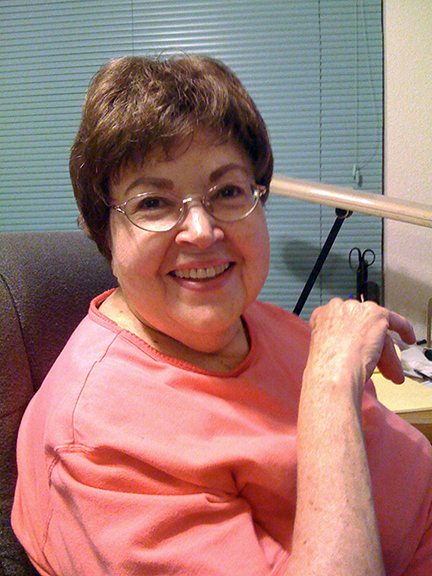Post-Polio Health, Volume 28, Number 1, Winter 2012
Ask Dr. Maynard
Frederick M. Maynard, MD“Ask Dr. Maynard,” Post-Polio Health, Volume 28, Number 1, Winter 2012
Question: I have been having a LOT of pain through my butt into my lower back. I looked up muscle groups and think I see what is causing the problem. I sit at my desk nine or so hours six days a week in order to survive financially.
Read More…
Mary Ann Buckingham had polio when she was 12 and walked using braces and crutches. Now 73, she started using a wheelchair about 20 years ago when her arms became too weak to use crutches.
As a polio support group leader for 10 years, she was well aware of the danger of pressure sores and took preventive measures to avoid them such as rotating her weight every 15 minutes and never scooting out of the chair. And, until recently, she was successful.
Read More…
 Grace Young
Grace Young
When I had polio at age 9, I was happy to have a wheelchair - any wheelchair - that would allow me the freedom to leave my bedroom. The only model available at that time was all wood with a cane back and wooden wheels. Undoubtedly it’s featured in the Smithsonian now. Large, heavy, clunky - forget taking it outside the house. It was a feat to even move it inside the house.
Read More…
A few months ago I flew to the east coast for a cruise and needed to take both my scooter and manual wheelchair. The problem was that both “vehicles” had loose parts and I was worried that something would get lost in the baggage compartment during the flight.
Read More…
Travel overseas - or anywhere - can be enjoyable, enriching, enlightening, or a complete disaster if your equipment ends up mutilated or at the wrong destination. You should have the adventures, not your wheelchair.
I have flown with a power scooter and a manual wheelchair, and have accompanied others who traveled with power wheelchairs. Air travel affords you less control over the destiny of your equipment than bus or train travel. But knowledge is power, and the more you know about traveling with equipment, the greater your changes of having a problem-free trip.
Read More…
I love to travel. No, I live to travel, and when I was mobile I did a lot of it, from camping here in the US to sightseeing in Europe.
Read More…
BABY, IT IS COLD OUTSIDE!
William G. Stothers
Snow and bone-chilling cold are making this a brutal winter across North America. And Phil the groundhog says it will go on for another six weeks.
Bad news for people stuck in this kind of weather, especially polio survivors. We know the snow-choked wheelchair wheels, snow-banked sidewalks and curb cuts, melting messes indoors, and that piercing wind chill.
Read More…
Many of us who had polio used canes, wheelchairs and bracing on our path to recovery and gradually were able to relinquish them. Others of us have developed different chronic conditions that have managed just fine until now without mobility equipment. But as we get older our bodies change, our symptoms escalate and daily activities use so much more energy that we don’t have the get-up-and-go to do what we have to do, much less enjoy the fun stuff. When walking becomes difficult, we have to compromise, reduce activities or eliminate them.
Read More…
Most people are very surprised at how much space is required install an ADA (Americans with Disabilities) compliant ramp. A very strong helper can push a wheelchair up a ramp that is steeper than 1/12 (1 inch of height for every foot of length) which is the MINIMUM SLOPE allowed for a residence. Many power chairs are powerful enough to climb a ramp that is steeper than code. It is recommended that a ramp in a commercial building have a gentler slope of 1/20.
Read More…